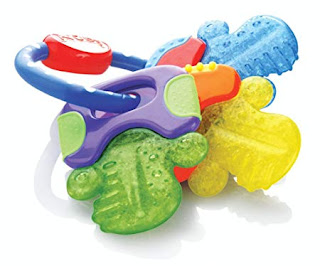https://offerforge.net/?a=28162&c=322012&s1=
Today's third instalment of the different types of toothbrushes will cover the other types of toothbrushes on the market. Part 1 and Part 2 explained the electrical and manual toothbrush; but there are more specialized toothbrushes that dentists recommend to their patients.
As a complement to the regular toothbrush, there are special devices to make cleaning easier.
INTERDENTAL BRUSHES
An interdental brush is a small brush specially designed for cleaning between your teeth, where a regular toothbrush does not reach. It can also be used by people with spaces between to clean those interdental spaces. In addition to your regular daily toothbrushing, using an interdental brush every day, is an easy and efficient method to keep your gums and teeth fresh and healthy. Cleaning with an interdental brush prevents gum inflammation, cavities and bad breath.
The brush resembles a tiny bottle brush. All interdental brushes have a plastic coated wire and comes in differing sizes.
IMPLANT BRUSHES
Patients who have dental implants, thorough oral hygiene is necessary to prevent disease and inflammation around the implants. Implant brushes will help to clean around implanted teeth.
The implant brush has an extra narrow head for easy cleaning of implants from the outside.
This slim brush head reaches even very narrow areas.
An angled neck makes it easier to clean the implant abutments from the inside.
Soft, end-rounded filaments ensure a gentle clean.
DENTURE BRUSHES
Specially designed for people with dentures. These brushes are used to clean dentures thoroughly and quickly.
The brush has a thicker handle that is contoured for easy gripping; while cleaning and brushing dentures. It is a double-headed brush fro better and more thorough cleaning.
The bristles are made of a very high-quality, durable nylon to ensure longevity and effectiveness. Denture brush bristles will normally be harder than the average, medium toothbrush used by non-denture wearers.
KIDDIES TOOTHBRUSHES
Parents are encouraged to start brushing their child's teeth as soon as the first tooth has erupted. The best way to introduce oral hygiene is to make it seem like fun. Some children love it from the start, while others will put up resistance.
Kiddies toothbrushes also come in all kinds of fun designs and sizes.
Here are some of the things to pay attention to when taking your child toothbrush shopping:
- Children's toothbrushes should always have soft bristles; because it's all they need to properly clean their teeth.
- Cartoon characters and great colours are one of the best things to exploit, when trying to get children to try new things.
- So of these toothbrushes have big, fat handles for an easy grip. However, those handles may prove to be too much for some children to hold. So a thinner handle that fit comfortably in their hands might work best.
Very often a child's first toothbrush will be a finger toothbrush. Finger toothbrushes look like small finger puppets that you can put on the end of a finger. They are extra soft, looks and feels like a toy that they get to play with. It work best for babies and children with only a few teeth. The parent should be the one to begin brushing their teeth with the finger puppet, and then let them take over when they become comfortable.

































